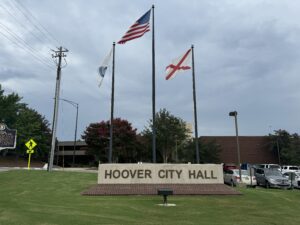Dynetics awarded a hypersonics contract

Dynetics, a wholly-owned subsidiary of Leidos, on Thursday announced that it has been awarded a contract to increase the capacity for America’s hypersonic flight testing. The program, known as Multi-Service Advanced Capability Hypersonics Test Bed (MACH-TB), was awarded by the Naval Surface Warfare Center, Crane division on behalf of the U.S. Department of Defense. MACH-TB supports hypersonic programs by creating opportunities to test technologies with robust, agile, and modular approaches. It will demonstrate ways to affordably prototype a test bed that leverages multiple, commercially-available launch vehicles for hypersonic payloads. The data collected from the test will provide insight to the DoD on technology improvement and capability validation, enabling a more robust and successful development of hypersonic weapon systems. MACH-TB will also provide a modular Experimental Glide Body (EGB) to create opportunities for technologies to be tested in relevant hypersonic environments to inform acquisition decisions for weapon systems. “We’re honored to be a part of this innovative and vital initiative,” said Leidos’ Dynetics Group President, Steve Cook. “Hypersonics are a top priority for our nation, and we’re honored to be a part of this innovative and vital initiative.” Economic developer Dr. Nicole Jones told Alabama Today, “Since 1974, Dynetics has been an integral part of the business climate in north Alabama. Started by two engineers, Hershel Matheny and Dr. Steve Gilbert, the company grew from 25 employees in its early days in Huntsville to thousands of employees today in multiple locations across 11 states.” “In January 2020, Leidos Holdings, Inc., a FORTUNE® 500 science and technology leader, acquired Dynetics, which, according to Dynetics, strengthened the company’s innovation and leadership position in defense, intelligence, and civil markets while extending its portfolio with new offerings and technical capabilities,” Jones explained. “The October 2022 hypersonic flight test research and development contract award is exciting news for Dynetics, our state’s economy, and national security.” This hypersonics flight test bed will bring to fruition a centralized hypersonic testing capability that can be leveraged by Navy Conventional Prompt Strike (CPS), Army Long Range Hypersonic Weapon (LRHW), the Missile Defense Agency (MDA), Air Force hypersonics programs, DoD research programs, small businesses, industry, and academia stakeholders. This program was initiated by the Navy’s CPS Program and will be managed by OSD’s Test Resources Management Center (TRMC) and executed by NSWC Crane. Dynetics will work with the National Security Technology Accelerator (NSTXL) and a team of over 20 partners across industries, small businesses, national laboratories, and academia to develop and execute the program. The planned partners include Peraton, Kratos Defense & Security Solutions, Stratolaunch, JRC Integrated Systems, NineTwelve Institute, Corvid, SpinLaunch, Varda, Kitty Hawk Technologies, Systima Division of Karman Space and Defense, Sandia National Laboratories, Oak Ridge National Laboratory, X-Bow Systems, RLNS and other experts in hypersonics. “We have always been fortunate to work in an industry where missions align on a single focus: protecting our nation,” Cook said. “Our team is comprised of some of the best in the industry and dedicated to solving tomorrow’s problems today.” The Work will be performed in Crane, Indiana, Huntsville, Alabama, and the National Capital Region. Dynetics provides responsive, cost-effective engineering, scientific, IT solutions to national security, cybersecurity, space, and critical infrastructure sectors. To connect with the author of this story, or to comment, email brandonmreporter@gmail.com.
Huntsville-based Dynetics acquired in $1.65 billion deal
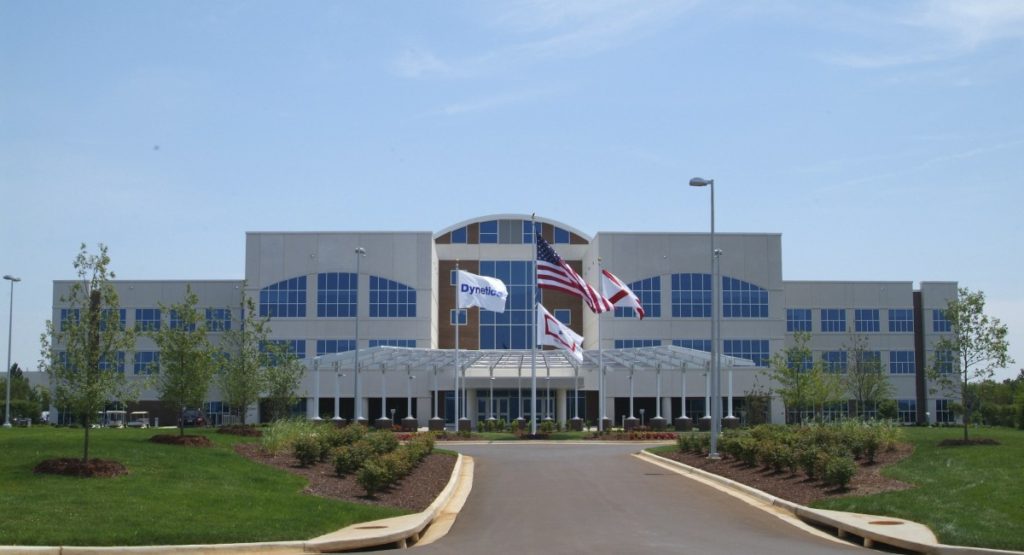
Leidos Holdings, Inc., a FORTUNE® 500 science and technology leader, on Friday completed the acquisition of Huntsville-based Dynetics, Inc., an industry-leading applied research and national security solutions company, for $1.65 billion in cash. Based in Huntsville, Ala., with offices throughout the United States, Dynetics is a leading provider of high-technology, mission-critical services and solutions to the U.S. Government, with a proven history of addressing the nation’s most challenging and technologically advanced missions. This combination of capabilities is intended to enhance Leidos’ competitive position across its Defense, Intelligence, and Civil Groups, and to accelerate opportunities within the Leidos Innovations Center (LInC), for customer focused research, development, and rapid prototyping. Dynetics will operate as a wholly-owned subsidiary of Leidos, and Dynetics’ Chief Executive Officer David King will continue to lead the business, reporting directly to Leidos’ Chairman and Chief Executive Officer Roger Krone. “Dynetics and Leidos share a commitment to advancing technology to address the toughest scientific and engineering challenges of our day. This combination adds innovative capabilities in our targeted growth areas, while expanding our secure agile production capabilities, secure agile manufacturing, and increasing our penetration with key customers,” explained Krone. “We are pleased to welcome an outstanding team of 2,300 employees with a shared culture of innovation and technical expertise that will benefit our collective customers and drive our continued success.” “Today is an exciting day for Dynetics as we embark on our future with Leidos. We know that our highly-skilled team will continue to provide excellent service to our customers and this will enable us to provide even more capabilities to our customers. Our solutions and capacity will continue to grow through this partnership. We are eager to share our culture and join the Leidos family,” added King.
University of Alabama wins fourth straight championship — in robotics
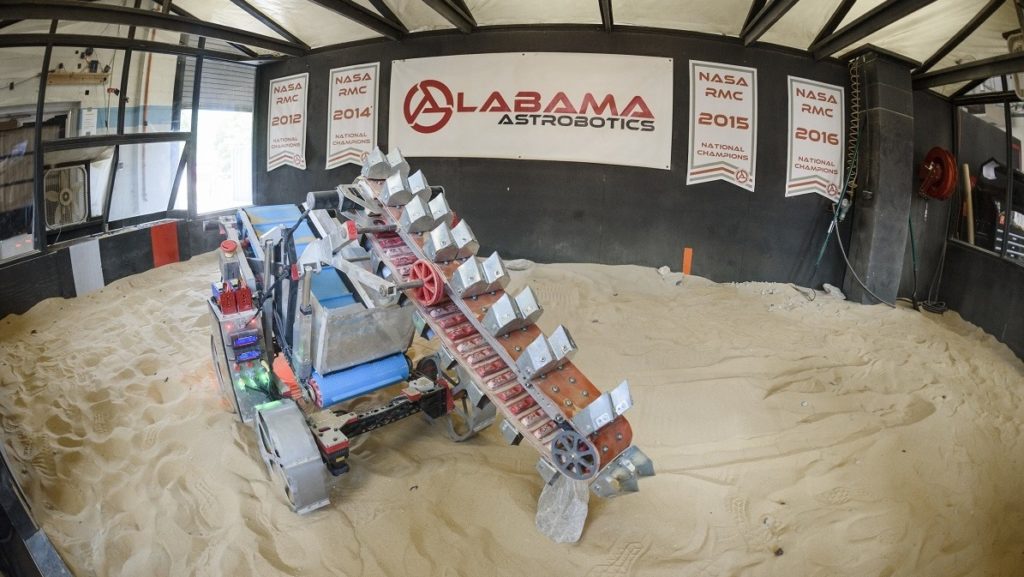
Make it four in a row. University of Alabama students who competed in a NASA robotics contest came away with the top prize again, making it four straight years for the team from UA to win. Alabama Astrobotics took the top prize at the NASA Robotic Mining Competition, besting student teams from more than 50 other institutions in the challenge to build a robot capable of navigating and excavating simulated Martian soil, or regolith. Made up of about 65 students from across eight disciplines including engineering and computer science, Alabama Astrobotics is the only team to win more than once in the nine-year history of the NASA contest, placing first in 2012, 2015, 2016, 2017 and, now, 2018. “Our team is just like a football team, you have seniors who graduate at the end and you have new people coming in at the beginning, so every year it’s a completely different team,” said team lead and electrical engineering student Max Eastepp. “For us to be successful this year says a lot for this team and says a lot for how we adapt to new challenges each year.” Eastepp, a native of New Orleans, said teamwork is critical as students worked from July through the contest this month to design the robot and tackle the new problem NASA presented this year. Contest organizers revised the rules and rubrics this year to reflect the discovery that water ice is prevalent throughout the Red Planet. The challenge is to mine the precious icy regolith, simulated with gravel in the contest, since water ice will provide oxygen, water and fuel for future off-world colonists. What that meant for the contest, though, is no points were awarded to teams for digging the top foot of regolith. Teams earned points for collecting the gravel 12 inches below the surface. UA’s robot mined more of the gravel than any other team in the contest, with many teams failing to mine any gravel. Also, Alabama Astrobotics was the only team with a robot that competed entirely autonomously, meaning the robot used computer programming to guide itself, mine and deposit the soil and gravel without any directions from students during the contest. The team placed first in five of nine categories: mining, autonomy, systems engineering paper, efficient use of communications power and outreach reports. In all, the students won $11,000 for use on next year’s robot. Dr. Kenneth Ricks, team adviser and associate professor of electrical and computer engineering, said the team’s consistent success comes from a culture of sticking to a plan – meeting deadlines, testing thoroughly before competition and paying attention to detail. “We know what needs to be done and when it needs to be done,” he said. “If our students buy into that process, they know they will have opportunities to be successful.” The team received funding from the Alabama Space Grant Consortium, NASA, Dynetics, Fitz-Thors Engineering, Crank N Chrome and the university. Republished with the permission of the Alabama Newscenter.
Lockheed Martin receives $80 Million contract for missile defense targets
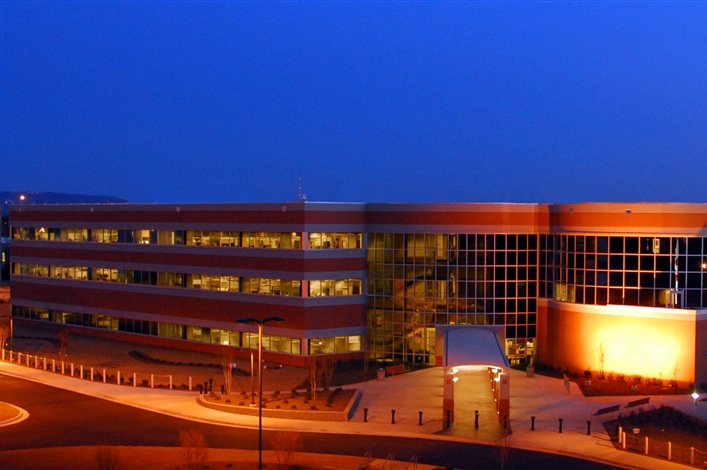
The Missile Defense Agency on Thursday awarded Lockheed Martin an $80.6 million contract to build and test modified ballistic re-entry vehicles and separation modules for missile defense tests that will be designed and produced in Huntsville, Ala. The company will be producing unarmed re-entry vehicles for target missile tests through 2022. The contract also includes opportunity for additional vehicles and mission support. “The re-entry vehicle is essentially the bullseye for an interceptor missile, and it is also one of the most complex parts of the target, in today’s environment, it’s incredibly important to test against threat-representative targets that look like enemy missiles, and we are proud to continue to provide that capability to the Missile Defense Agency,” said vice president of Missile Defense Programs at Lockheed Martin Space, Sarah Reeves. Huntsville native companies will be included on the project including: Dynetics, Inc. will provide the aeroshell structures, and Battelle will provide the hit detection system. “Instead of carrying warheads, modified ballistic re-entry vehicles carry sensors to measure the accuracy and effectiveness of the target, interceptor and missile defense system. Testing against a capable, threat-representative re-entry vehicle helps ensure the ballistic missile defense system is ready to detect and destroy enemy missiles,” Lockheed Martin said in a news release. Lockheed Martin is a long-standing defense company, whose Huntsville location will be celebrating 55 years of work within the Yellowhammer State in May. The company expanded it’s presence within the state last year with the opening of their new training facility in Troy, Ala. in September. The Huntsville facility is expected to employ over 240 people by 2020.
University of Alabama robotics team claims third straight victory at NASA competition

For the third consecutive year, a student team at the University of Alabama placed first at a NASA robotics contest. Alabama Astrobotics took the top prize at the NASA Robotic Mining Competition, besting student teams from 45 other institutions in the challenge to build a robot capable of navigating and excavating simulated Martian soil, or regolith. “Winning the NASA Robotic Mining Competition for a third straight year is amazing and humbling,” said team lead Joseph Kabalin, a recent mechanical engineering graduate from Loveland, Ohio. “Our team knows how hard it is to get here and how much work it takes. It was truly a team effort.” The team has more than 60 students from across eight disciplines, including engineering and computer science, and it is the only team to win more than once in the contest’s eight years, placing first four times in 2012, 2015, 2016 and this year. The teams competed at the Kennedy Space Center in Florida. “I am very proud of the team members,” said Dr. Kenneth Ricks, team adviser and associate professor of electrical and computer engineering. “They bought into our process, put their individual needs aside for the good of the team, and dedicated themselves to excellence in every category, which was recognized by the competition judges.” NASA’s Curiosity rover on Mars at “Rocknest,” the spot in Gale Crater where the mission’s first scoop sampling took place. Four scoop scars can be seen in the regolith in front of the rover. A fifth scoop was collected later. The NASA Robotic Mining Competition focuses on related regolith digging operations. (NASA/JPL-Caltech/MSSS) Robots are judged on how much regolith they can dig and deposit into bins as well as their ability to operate on their own, or autonomously. This year, Alabama Astrobotics collected a record amount of regolith, and the robot was the first ever to complete its tasks fully autonomously. The team placed first in five of nine categories that included mining, autonomy, technical presentation, effective use of communication with the robot and outreach project. Alabama Astrobotics placed in the top three of every category, racking up the most points in the contest’s history. In all, the students won $10,000 for use on next year’s robot. The team designed and built a new robot, but stuck with the approach that netted the top prize the past two years. The students improved some of the robot’s mining capabilities, making it lighter and upgrading its ability to operate autonomously, Kabalin said. The robot is called MARTE 2017, which stands for the Modular Autonomous Robotic Terrestrial Excavator 2017, and kept the bucket ladder excavator and an offloading conveyor belt. It also continued to use lidar sensors to scan in 3-D using 16 lasers to measure distance and determine an object’s position. The sensors are a sort of radar that uses light instead of sound. This year the team installed an electronic device called an inertial measurement unit to help make the autonomy more reliable. The technology concepts developed by the collegiate teams for this competition could be used to mine resources on other planets, according to NASA. The team received funding from the Alabama Space Grant Consortium, NASA, Dynetics, Fitz-Thors Engineering, Crank N Chrome, Ion Motion Control, Trailer Store Plus, SolidWorks and the University of Alabama. Republished with permission of Alabama NewsCenter.
Aerojet Rocketdyne to move 800+ jobs to Huntsville
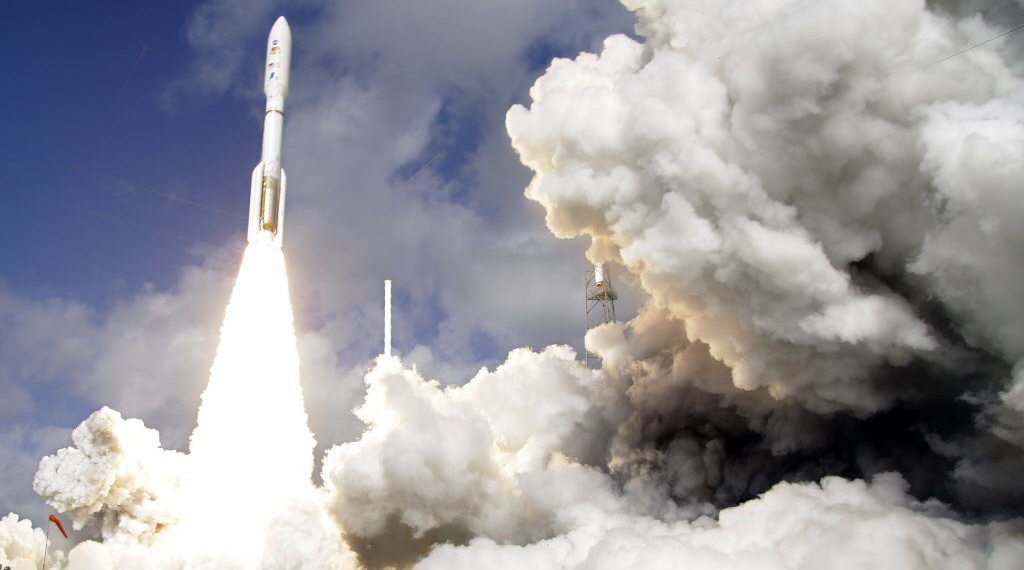
A globally-recognized rocket and missile propulsion manufacturer is expanding its presence in Alabama. Aerojet Rocketdyne announced plans on Monday it will consolidate several facilities and relocate their operations to Huntsville, Ala. over the next two years. “We are two years into the first phase of our CIP affordability drive and the consolidation progress, and overhead cost reductions achieved to date have exceeded our expectations,” said Aerojet Rocketdyne CEO and President Eileen Drake. “We intend to build on this success by expanding our CIP-related consolidation efforts so we can deliver the value our customers demand and position our company for further growth.” Aerojet Rocketdyne plans to consolidate its Sacramento and Vernon, Cali. and Gainesville, Va. sites while centralizing and expanding its existing presence in Huntsville, Ala. with a new state-of-the-art manufacturing facility for AR1 engine production, Additive Manufacturing, Composites production and Research & Development. The site is expected to be ready for production in mid-2019. The company plans to close its Gainesville, Va. facility in the third quarter of 2018. Approximately 170 positions there will be relocated or eliminated with relocations planned to Huntsville and the company’s facility in Orange County, Va.. To accommodate the company’s consolidations, overall growth plans for Huntsville include the addition of approximately 800 jobs to support America’s space and defense needs for the next quarter century and beyond. “Huntsville’s legacy in the development of rocket propulsion systems makes it the ideal choice for Aerojet Rocketdyne’s AR1 rocket engine assembly center and its advanced manufacturing and engineering operations,” said Greg Canfield, secretary of the Alabama Department of Commerce. “Aerojet Rocketdyne’s decision to base these cutting-edge activities in Huntsville is a powerful endorsement of the capabilities found there.” The AR1 is being developed to provide the United States with a new, world-competitive, state-of-the-art engine for launch vehicles and will end American dependency on Russian engines for national security and civil space launches. The company is currently developing and testing AR1 engine systems and is on schedule to deliver a certified engine in 2019 to meet the congressionally-mandated deadline to end U.S. dependence on foreign engine suppliers. “This project is another great example of our effort to diversify Huntsville’s economy with high quality advanced manufacturing, and yet, Aerojet Rocketdyne is here because of Huntsville’s outstanding role in research and defense technology,” stated Huntsville Mayor Tommy Battle. “This project works all facets of our economy by marrying R&D with advanced manufacturing. We are both rocket scientists and rocket builders.” At the company’s Sacramento site, Defense-related program management, engineering and related support positions will be moved to the company’s Huntsville, Alabama, facilities, home of Aerojet Rocketdyne’s Defense headquarters and Rocket Shop℠ Defense Advanced Programs, by the end of 2018. “Aerojet Rocketdyne’s announcement today is excellent news for our state,” added Sen. Richard Shelby. “North Alabama remains the nation’s epicenter for aerospace and defense research, development, and production. I am pleased to see Aerojet Rocketdyne investing and growing in Alabama, and I look forward to working with them and other businesses to continue boosting economic development opportunities.”

